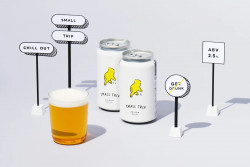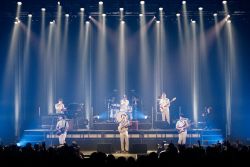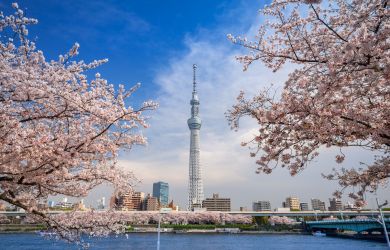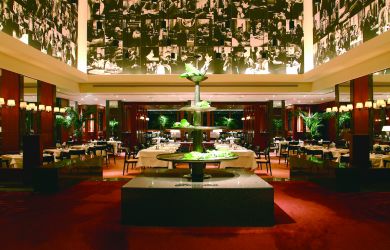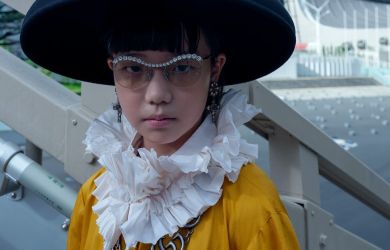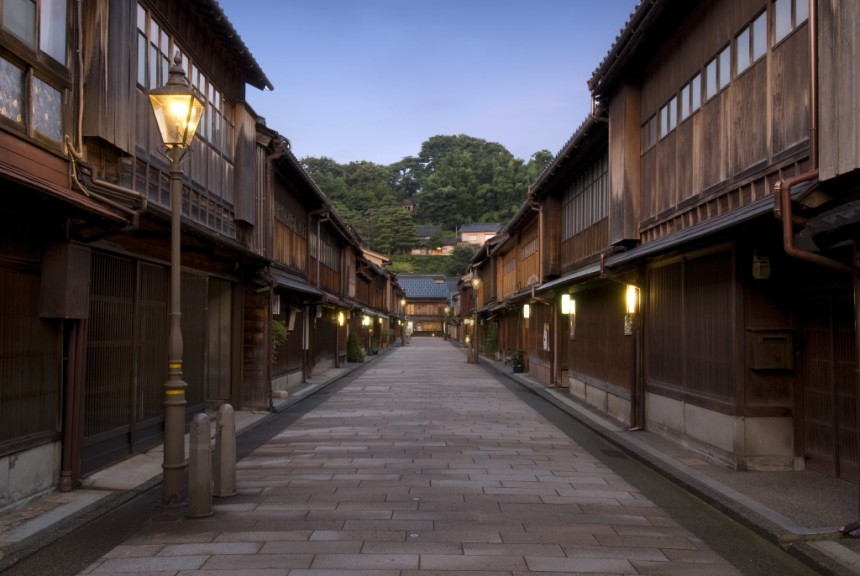
May 28, 2018
Kanazawa – A Taste of Old Japan
Kyoto’s charms without the hordes of tourists
Kanazawa, also known as “Little Kyoto” due to its resemblance with the old imperial capital, is one of Japan’s hidden gems. With one of the most beautiful gardens in the country, geisha and samurai districts and fantastic food, Kanazawa offers a great taste of traditional Japan away from the tourist crowds.
Getting There
Kanazawa is the capital of Ishikawa Prefecture, located on the main island of Honshu. The Hokoriku Shinkansen operates a direct service from Tokyo to Kanazawa in around 2 hours and 30 minutes, giving you a chance to admire Mount Asama and scenic views of Nagano along the way.
Kenroku-en
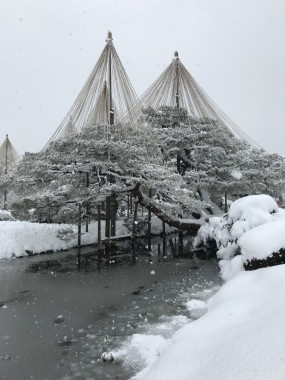
Start your visit with Kanazawa’s main attraction: Kenroku-en. Originally built as the outer garden of Kanazawa Castle during the Edo period, Kenroku-en is considered, today, as one of the three most beautiful gardens in Japan.
The name Kenroku-en itself (“garden with six characteristics”) refers to the six attributes of a “perfect garden” – spaciousness, serenity, venerability, scenic views, subtle design and coolness. Its vast space (25 acres) and exceptionally diverse landscape (ponds, waterfalls, pagodas etc.) creates an oasis of calm amidst the city with spectacular views all year round.
April is one of the most popular times to visit. People from all over the world come to admire its 400 cherry blossoms of approximately 40 varieties, turning the place into an ocean of pink flowers. The sakura festival and beautiful illuminations at night make it one of the best cherry blossom spots in the whole country.
Winter is also a magical time to come when the garden is covered in snow and the trees are protected with conical structures to prevent them from breaking–an arrangement known as yukitsuri.
Do not miss a chance to visit one of the three traditional teahouses and enjoy a cup of matcha tea and wagashi (Japanese sweets) with stunning views over the trees, ponds and stone lanterns.
Omi-Cho Market

After your visit, head down to the Omi-cho Market to visit “Kanazawa’s kitchen.” Since its opening in 1721, the fresh food market has been a popular destination amongst locals and tourists who want to discover the real cuisine of Kanazawa. Due to its close proximity to the Sea of Japan and high quality water coming from the nearby Hakusan Mountains, the city is blessed with fantastic seafood and unique vegetables from the Kaga region.
The market includes over 170 stalls where you will find a great variety of fresh fish, shellfish and tsukemono (Japanese pickles). Each season offers its lot of delicacies but the most famous of all is undoubtedly the zuwai-gani snow crab. This variety of crab is only available during the winter months and is particularly sought-after for its tender meat and distinctive umami (savory) taste.
The best way to enjoy these local delicacies is to stop for lunch (or breakfast for the bravest ones) in one of the market’s restaurants. They all serve great seafood dishes including the local specialty: kaisen-don (seafood rice-bowl). Tucked at the end of a side alley, Iki-Iki Tei serve one of the best ones. They only have 10 seats so be prepared to wait. You won’t regret it.
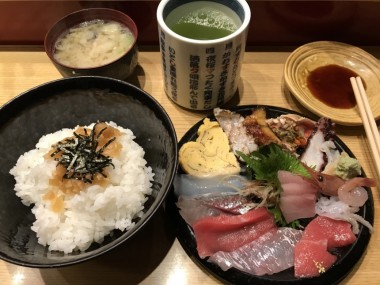
Kanazawa Arts & Crafts
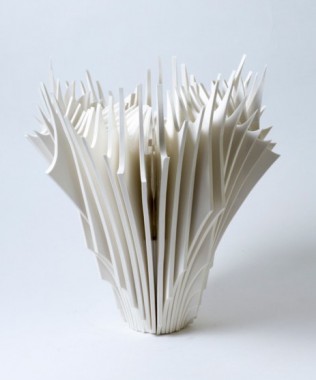
Some of the city’s most famous handicrafts include Kutani porcelain, Shikki lacquerware and Ohi Chozaemon ware. The latter has been mastering the art of pottery for over 350 years, using traditional techniques passed down from generation to generation.
The Ohi potters only use their hands and a spatula to shape the clay rather than a wheel. They also bake it at a very low temperature, giving their pottery a distinctive color and shape highly rated amongst connoisseurs.
The Ohi museum in Kanazawa will give you an excellent introduction to this local ceramic tradition. Designed by renowned Japanese architect Kengo Kuma, the adjacent gallery hosts a range of pottery for sale as well as a small café where you can enjoy a traditional tea ceremony in an original Ohi tea bowl of your choice.
The current 11th generation Ohi Chozaemon potter and his son, Yuki Nara, use traditional techniques inherited from their ancestors to make beautiful and modern pieces of art. These can be seen on the upper floor of the museum as well as various art galleries around the world.
Higashi Chaya – The Old Geisha District
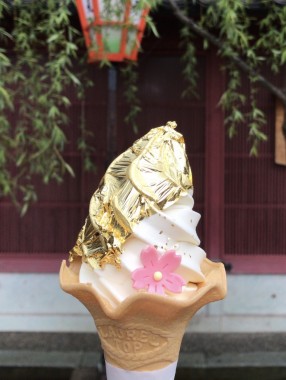
Located a short walk away from the Ohi gallery, on the bank of the Asano river, the historical Higashi Chaya district will transport you back in time. Its maze of paved alleys dotted with beautiful wooden-fronted houses is often compared to Kyoto’s Gion district – hence Kanazawa’s nickname “Little Kyoto”.
Like Kyoto, Kanazawa was spared from bombing during World War II, therefore you can still admire the original chaya houses that were built over 180 years ago. Some of them host geisha performance shows in the evening.
Along with restaurants and traditional tea houses, you will find shops selling another speciality of Kanazawa: gold leaf. The city produces over 98 percent of the Kinpaku (gold leaf) used in Japan. For centuries, the Kanazawa gold leaf has been utilised in numerous decorations of buildings across the country, including the famous Kinkaku-ji Golden Temple in Kyoto.
For the great joy of locals and visitors, you can also find it in all sorts of products such as tableware, cosmetics and even food. The 24-carat gold facemask and the gold-topped ice cream cone will make you feel (and look) like a queen!
A Modern City
No tour of Kanazawa is complete without visiting the 21st Century Museum of Contemporary Art.
The museum was opened in 2004 in an attempt to revitalize the city’s creative energy and to act as a bridge between the region’s rich heritage and art of the future.
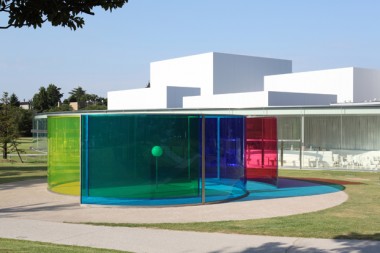
The beautiful modern structure is almost entirely made of glass and hosts a great collection of contemporary art. Some of the museum’s highlights include Leandro Erlich’s famous “Swimming Pool” and Olafur Eliasson’s “Colour Activity House.”
With its exceptional cultural and culinary assets and a perfect combination of tradition and modernity, Kanazawa embodies the spirit of Japan and should definitely make it to the top of your bucket list.
